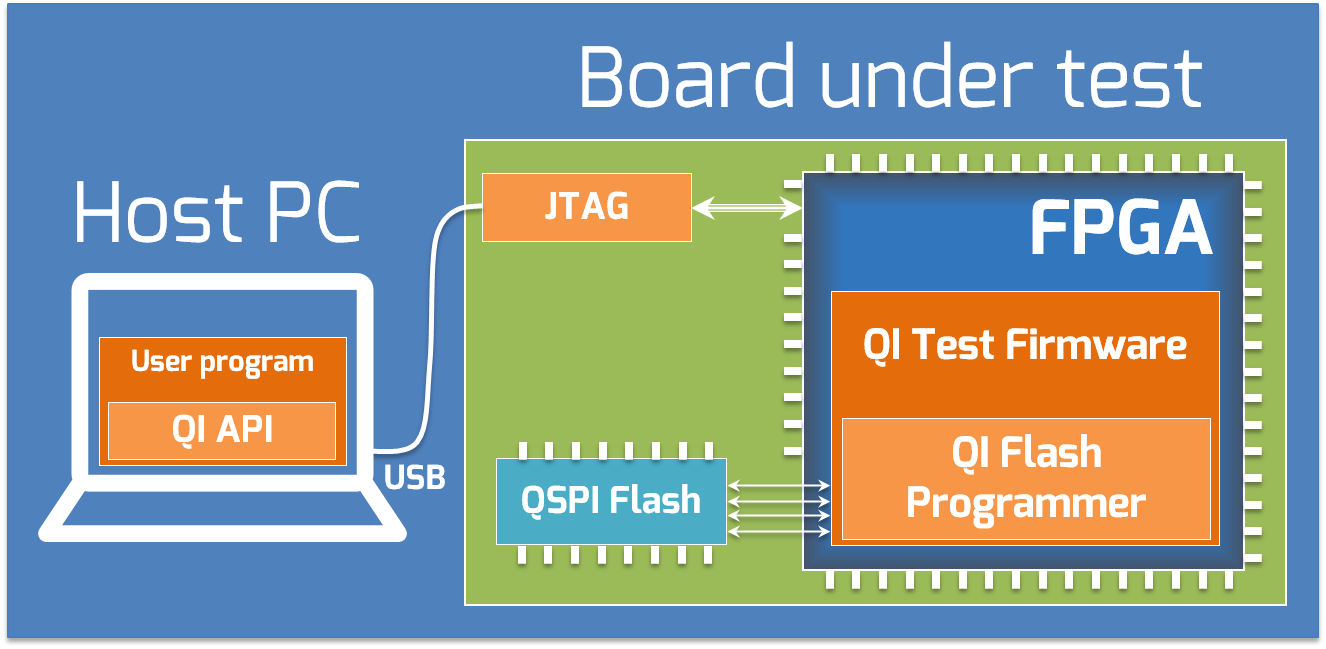QI Flash IC Programmer Delivers Amazing Performance even with Low-Cost JTAG Cables

Quick Instruments test suite provides a dedicated solution for swift In-System Programming (ISP) of a flash IC attached to FPGA. One of the biggest advantage of the QI flash instrument is an ability to deliver a superior performance (3Mbps) while having extremely modest requirements towards test hardware. Because the instrument handles programming routines directly inside the target FPGA, even an inexpensive USB-to-JTAG cable (such as Digilent HS3 or FTDI C232HM-DDHSL) will be sufficient to write a flash image in a couple of seconds.
Flash programming is an inevitable step during manufacturing of an FPGA-based product. Since most of modern FPGAs lose their configuration after power-cycle, a non-volatile memory device (normally SPI flash) is always placed on PCBA to provide a boot source for the FPGA. At the time of PCBA production, this flash memory has to be written with a target configuration image.
Among other nice features, QI-based solution includes several smart techniques such as checksum-based flash content verification and in-FPGA flash blank check that boost the performance of ISP to the level unreachable by conventional in-system and external programmers. When running on a simple USB cable, the effective throughput reaches 3Mbps for programming and up to 100Mbps for checksum-based verification. Those figures will go higher if more advanced JTAG driver is used.
Just like all other instruments of the QI portfolio, the flash programmer is well-suited for production environments. It does not require test-points or a dedicated flash access (besides the standard JTAG interface, which is available on every FPGA board). The solution is easy-to-use and supports many types of flash devices out-of-the-box via built-in user-expandable flash model library. When combined with other QI instruments, flash programming can be employed along with or directly after product test phase.